Abstract
By employing the techniques of immunofluorescence and radioimmunodiffusion using 32P-labeled poliovirus as the antigen, the immunoglobulin response to poliovirus in serum, nasopharynx, spinal fluid, and in different segments of the central nervous system (CNS) was studied after intramuscular, oral, intranasal, and intrathalamic administration of inactivated (Salk), live attenuated (Sabin), or live virulent (Mahoney) type I poliovirus. Spinal fluid γG antibody was detected after immunization with Sabin or Mahoney virus and intramuscular administration of Salk vaccine. The response in the CNS was characterized by the appearance of γG antibody after oral or intrathalamic administration of Mahoney virus and rarely after intrathalamic inoculation of Sabin vaccine. The antibody activity in CNS was limited to the areas of poliovirus replication. Intrathalamic immunization with Mahoney virus resulted in local γG antibody production in the CNS in the absence of any detectable response in serum. Discrete foci of γG-containing cells were observed in those areas of CNS which contained poliovirus antibody. No immunoglobulin-containing cells or poliovirus antibody was seen in the CNS of monkeys immunized with intramuscularly or orally administered Sabin or Salk vaccine and in sham-immunized control monkeys. It is suggested that the CNS, when stimulated locally with a potent replicating viral antigen, may manifest a specific local antibody response, which is independent of the response in serum.
Full text
PDF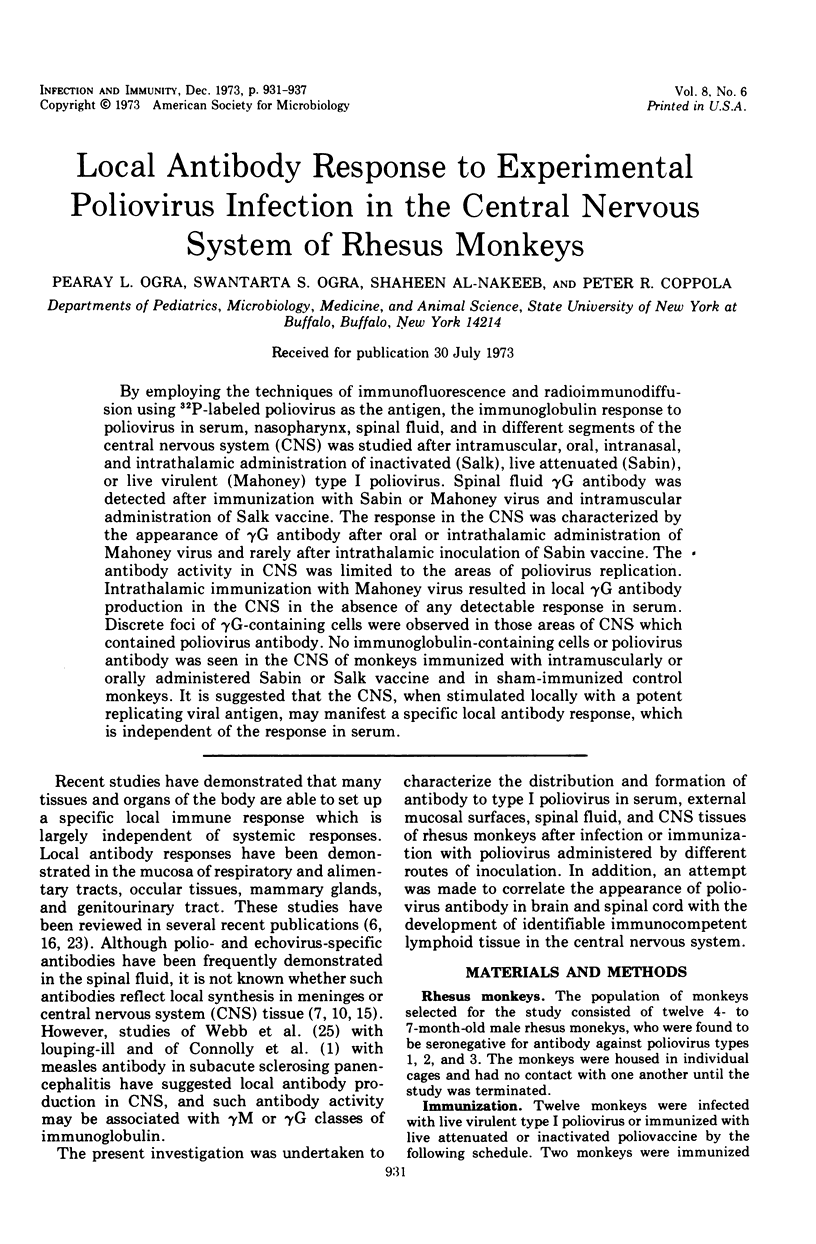
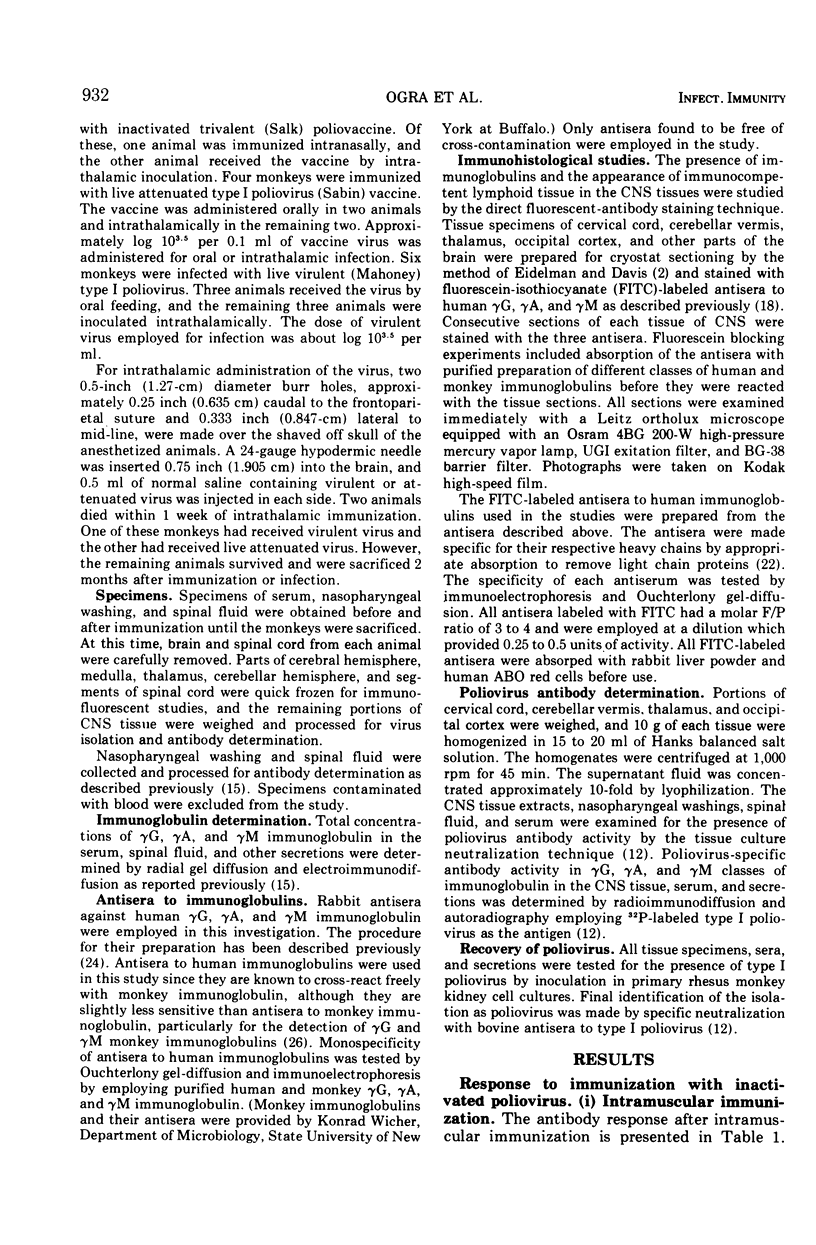
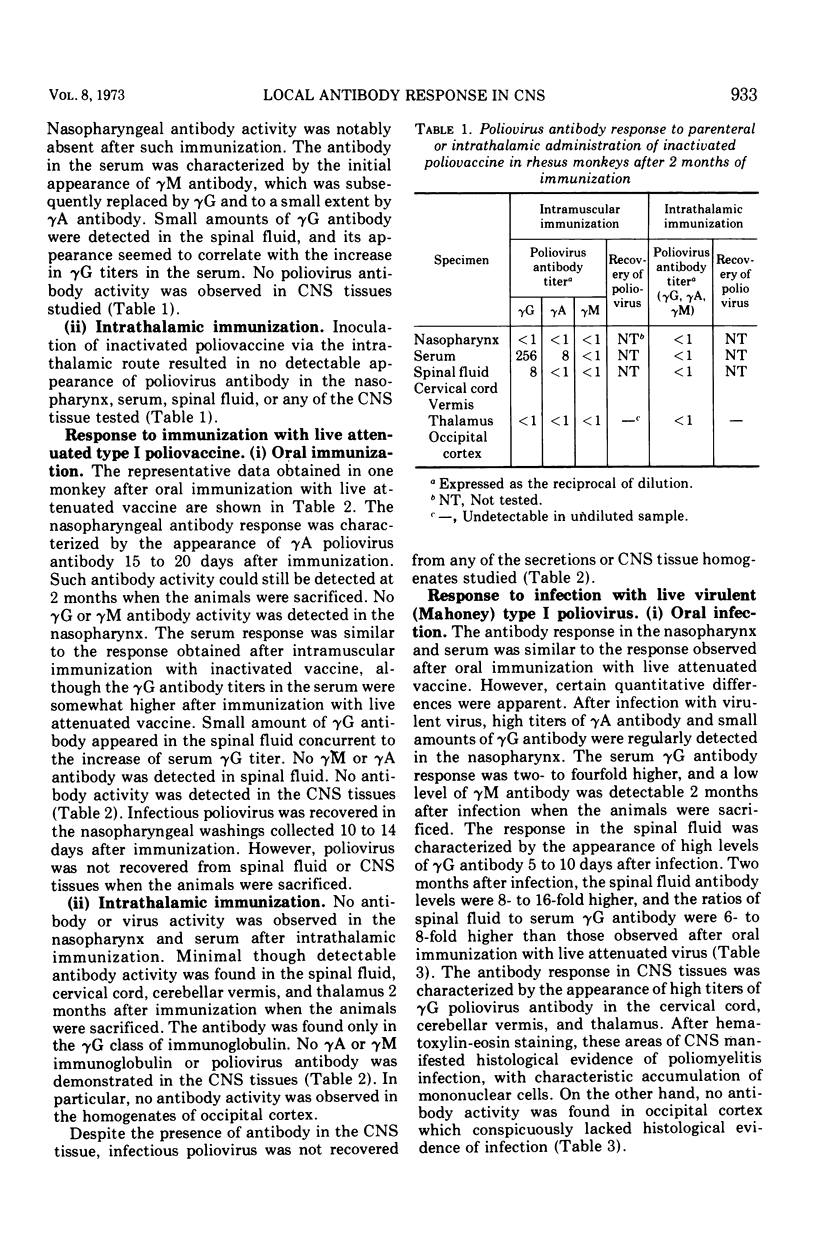
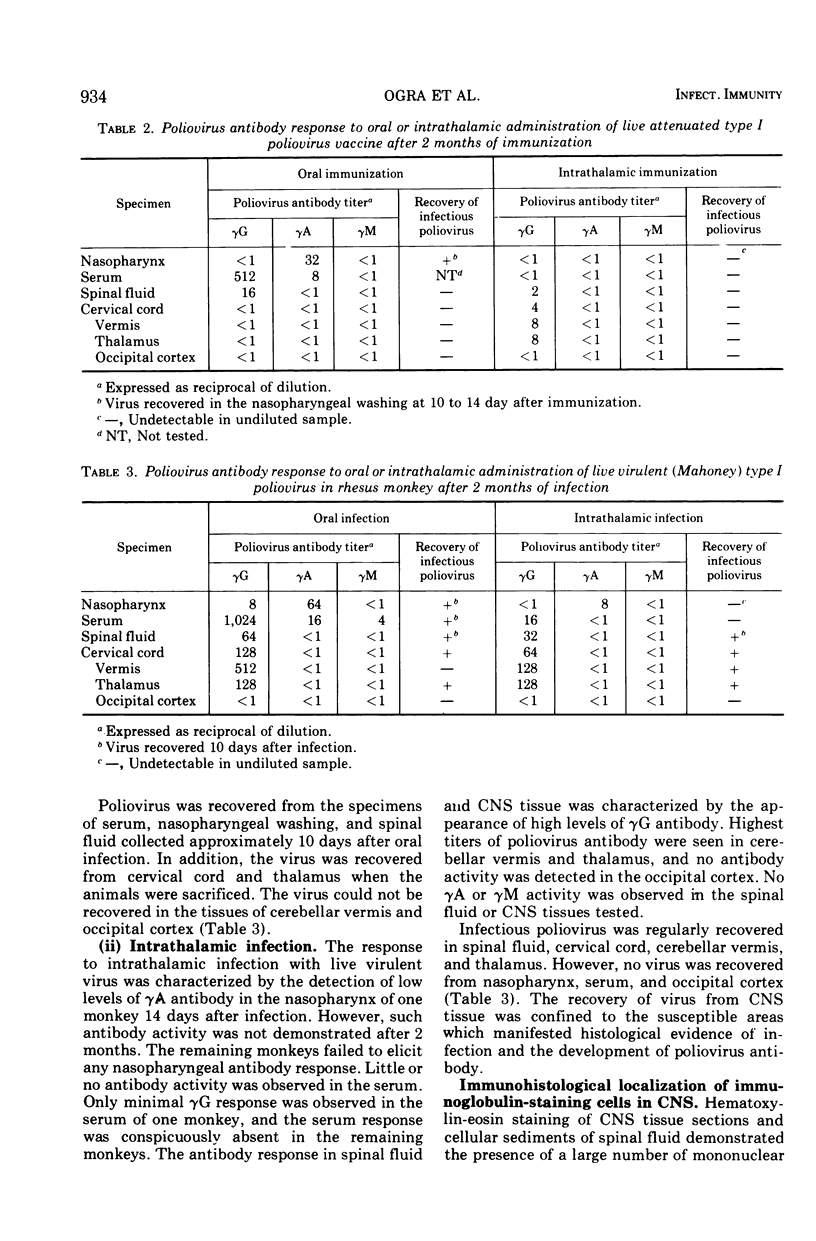
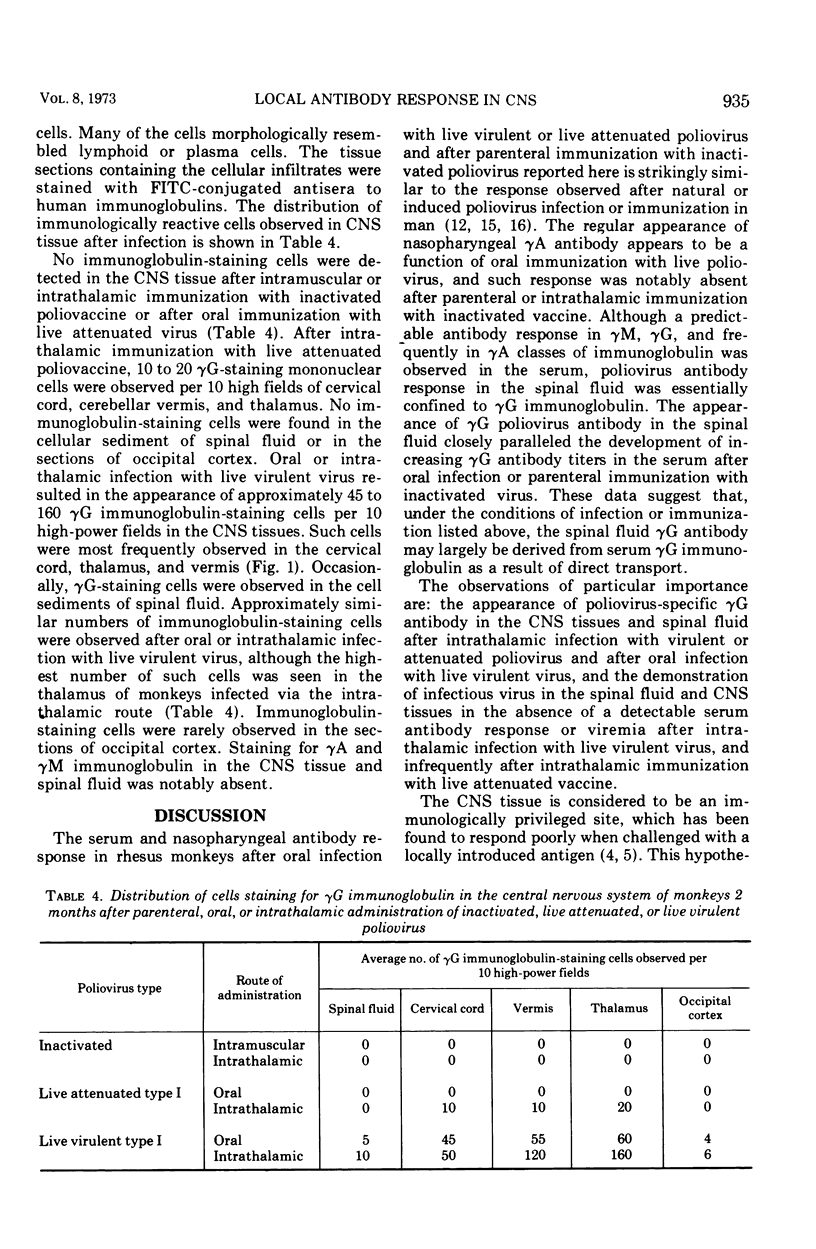
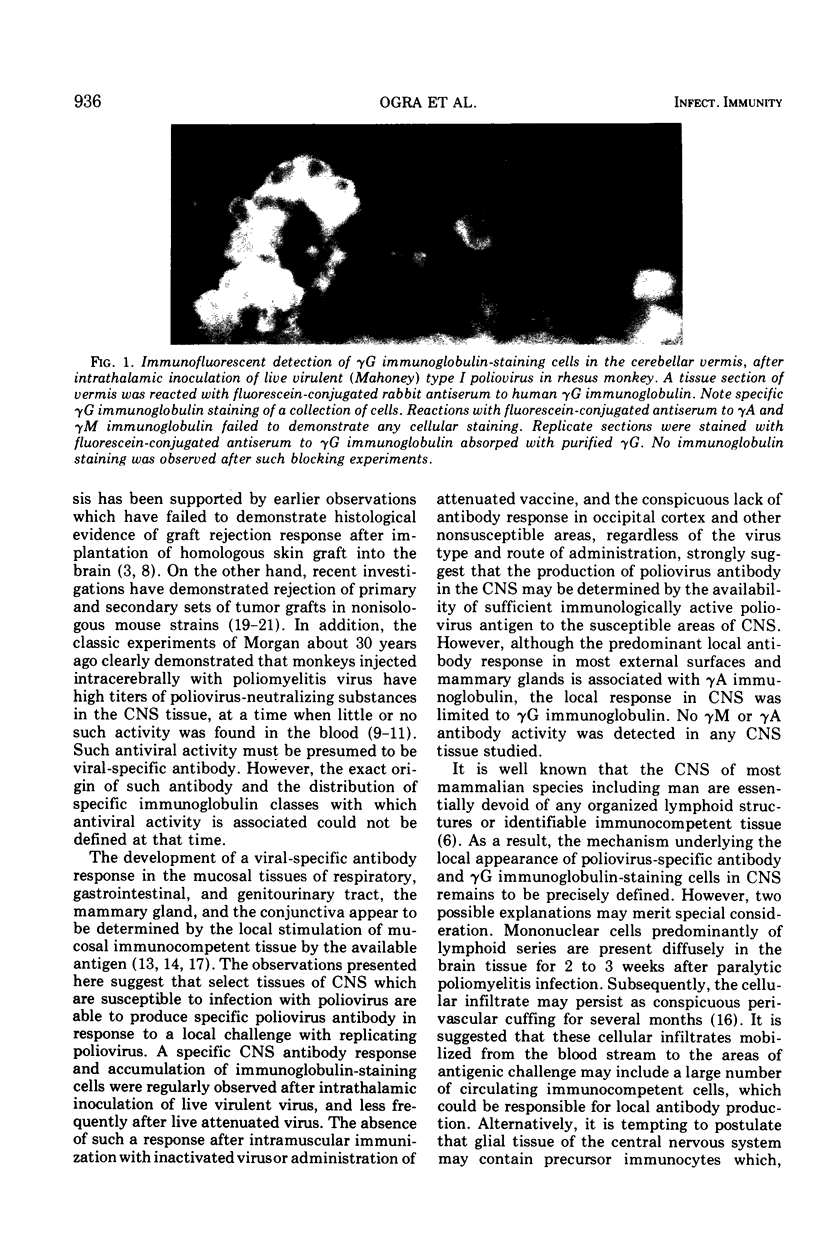
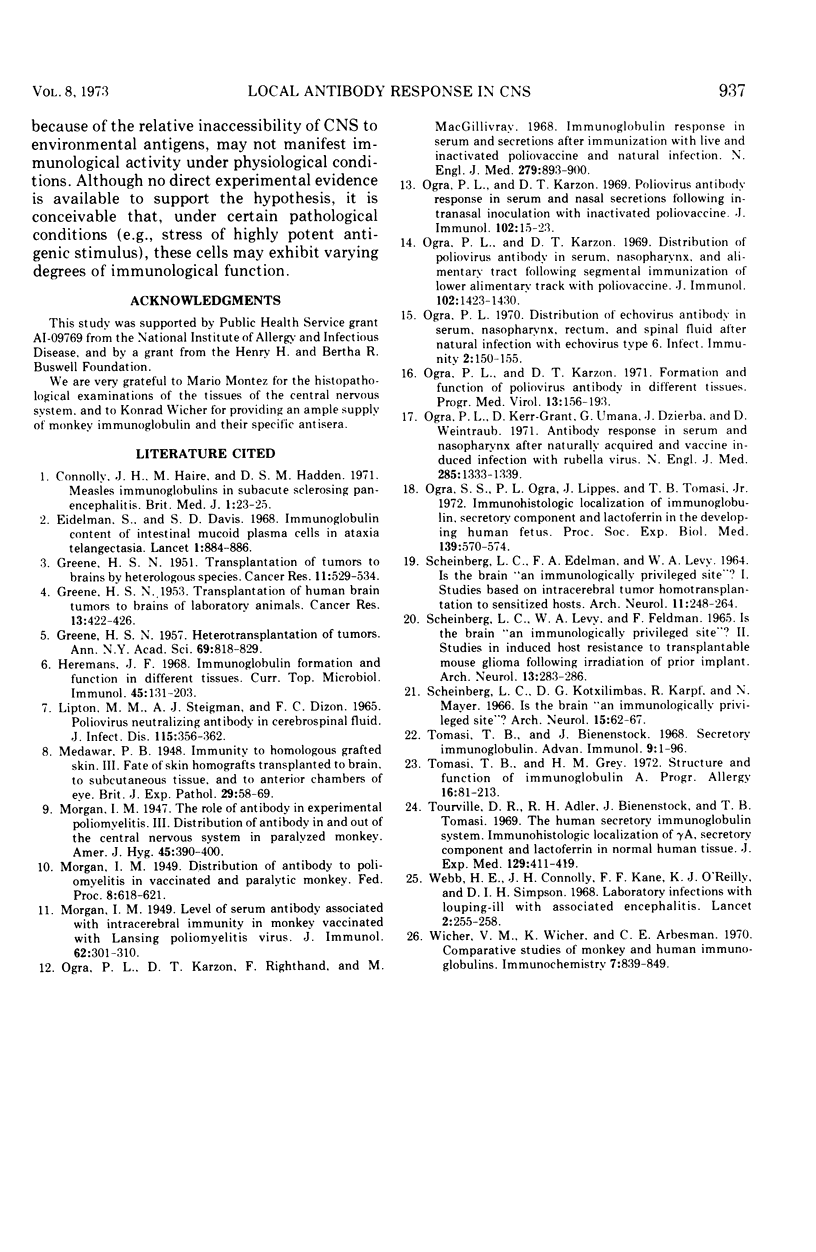
Images in this article
Selected References
These references are in PubMed. This may not be the complete list of references from this article.
- Connolly J. H., Haire M., Hadden D. S. Measles immunoglobulins in subacute sclerosing panencephalitis. Br Med J. 1971 Jan 2;1(5739):23–25. doi: 10.1136/bmj.1.5739.23. [DOI] [PMC free article] [PubMed] [Google Scholar]
- Eidelman S., Davis S. D. Immunoglobulin content of intestinal mucosal plasma-cells in ataxia telangiectasia. Lancet. 1968 Apr 27;1(7548):884–886. doi: 10.1016/s0140-6736(68)90238-9. [DOI] [PubMed] [Google Scholar]
- GREENE H. S. N. The transplantation of tumors to the brains of heterologous species. Cancer Res. 1951 Jul;11(7):529–534. [PubMed] [Google Scholar]
- GREENE H. S. Heterotransplantation of tumors. Ann N Y Acad Sci. 1957 Dec 16;69(4):818–829. doi: 10.1111/j.1749-6632.1957.tb49720.x. [DOI] [PubMed] [Google Scholar]
- GREENE H. S. The transplantation of human brain tumors to the brains of laboratory animals. Cancer Res. 1953 Jun;13(6):422–426. [PubMed] [Google Scholar]
- Heremans J. F. Immunoglobulin formation and function in different tissues. Curr Top Microbiol Immunol. 1968;45:131–203. doi: 10.1007/978-3-642-50109-8_4. [DOI] [PubMed] [Google Scholar]
- Lipton M. M., Steigman A. J., Dizon F. C. Poliovirus neutralizing antibody in cerebrospinal fluid. J Infect Dis. 1965 Oct;115(4):356–362. doi: 10.1093/infdis/115.4.356. [DOI] [PubMed] [Google Scholar]
- MORGAN I. M. Distribution of antibody to poliomyelitis in vaccinated and paralytic monkeys. Fed Proc. 1949 Sep;8(3):618–621. [PubMed] [Google Scholar]
- Monte-Wicher V., Wicher K., Arbesman C. E. Comparative studies of monkey and human immunoglobulins. Immunochemistry. 1970 Oct;7(10):839–849. doi: 10.1016/0019-2791(70)90060-1. [DOI] [PubMed] [Google Scholar]
- Ogra P. L. Distribution of echovirus antibody in serum, nasopharynx, rectum, and spinal fluid after natural infection with echovirus type 6. Infect Immun. 1970 Aug;2(2):150–155. doi: 10.1128/iai.2.2.150-155.1970. [DOI] [PMC free article] [PubMed] [Google Scholar]
- Ogra P. L., Karzon D. T. Distribution of poliovirus antibody in serum, nasopharynx and alimentary tract following segmental immunization of lower alimentary tract with poliovaccine. J Immunol. 1969 Jun;102(6):1423–1430. [PubMed] [Google Scholar]
- Ogra P. L., Karzon D. T. Poliovirus antibody response in serum and nasal secretions following intranasal inoculation with inactivated poliovaccine. J Immunol. 1969 Jan;102(1):15–23. [PubMed] [Google Scholar]
- Ogra P. L., Kerr-Grant D., Umana G., Dzierba J., Weintraub D. Antibody response in serum and nasopharynx after naturally acquired and vaccine-induced infection with rubella virus. N Engl J Med. 1971 Dec 9;285(24):1333–1339. doi: 10.1056/NEJM197112092852401. [DOI] [PubMed] [Google Scholar]
- Ogra S. S., Ogra P. L., Lippes J., Tomasi T. B., Jr Immunohistologic localization of immunoglobulins, secretory component, and lactoferrin in the developing human fetus. Proc Soc Exp Biol Med. 1972 Feb;139(2):570–574. doi: 10.3181/00379727-139-36188. [DOI] [PubMed] [Google Scholar]
- SCHEINBERG L. C., EDELMAN F. L., LEVY W. A. IS THE BRAIN "AN IMMUNOLOGICALLY PRIVILEGED SITE"?I. STUDIES BASED ON INTRACEREBRAL TUMOR HOMOTRANSPLANTATION AND ISOTRANSPLANTATION TO SENSITIZED HOSTS. Arch Neurol. 1964 Sep;11:248–264. doi: 10.1001/archneur.1964.00460210026003. [DOI] [PubMed] [Google Scholar]
- Scheinberg L. C., Kotsilimbas D. G., Karpf R., Mayer N. Is the brain "an immunologically privileged site"? 3. Studies based on homologous skin grafts to the brain and subcutaneous tissues. Arch Neurol. 1966 Jul;15(1):62–67. doi: 10.1001/archneur.1966.00470130066006. [DOI] [PubMed] [Google Scholar]
- Scheinberg L. C., Levy A., Edelman F. Is the brain an "immunologically privileged site"? 2. Studies in induced host resistance to transplantable mouse glioma following irradiation of prior implants. Arch Neurol. 1965 Sep;13(3):283–286. doi: 10.1001/archneur.1965.00470030063005. [DOI] [PubMed] [Google Scholar]
- Tomasi T. B., Grey H. M. Structure and function of immunoglobulin A. Prog Allergy. 1972;16:81–213. [PubMed] [Google Scholar]
- Tomasi T. B., Jr, Bienenstock J. Secretory immunoglobulins. Adv Immunol. 1968;9:1–96. doi: 10.1016/s0065-2776(08)60441-1. [DOI] [PubMed] [Google Scholar]
- Tourville D. R., Adler R. H., Bienenstock J., Tomasi T. B., Jr The human secretory immunoglobulin system: immunohistoligical localization of gamma A, secretory "piece," and lactoferrin in normal human tissues. J Exp Med. 1969 Feb 1;129(2):411–429. doi: 10.1084/jem.129.2.411. [DOI] [PMC free article] [PubMed] [Google Scholar]
- Webb H. E., Connolly J. H., Kane F. F., O'Reilly K. J., Simpson D. I. Laboratory infections with loupingill with associated encephalitis. Lancet. 1968 Aug 3;2(7562):255–258. doi: 10.1016/s0140-6736(68)92356-8. [DOI] [PubMed] [Google Scholar]



